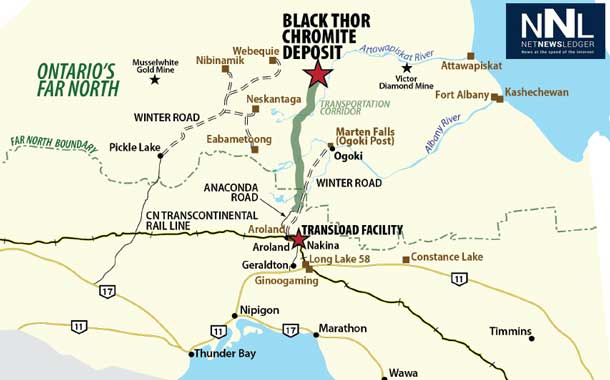 THUNDER BAY – The Ontario Mining Association’s economic impact study Mining: Dynamic and Dependable for Ontario’s Future clearly indicates that having a headframe on the local horizon is beneficial to the regional economy. Almost 75% of the services and supplies (input costs) purchased by a mine are acquired from companies within Ontario and 31% of the total purchases come from companies located within 100 kilometres of mine sites.
THUNDER BAY – The Ontario Mining Association’s economic impact study Mining: Dynamic and Dependable for Ontario’s Future clearly indicates that having a headframe on the local horizon is beneficial to the regional economy. Almost 75% of the services and supplies (input costs) purchased by a mine are acquired from companies within Ontario and 31% of the total purchases come from companies located within 100 kilometres of mine sites.
Only 11% of purchases by Ontario mines are made outside of Canada and about 14% come from Canadian companies located outside of Ontario. Part of the reason mining has such a positive influence on other sectors of the economy is because approximately 90% of its expenditures are made inside Canada providing company revenues, employees’ salaries and government taxes.
With mines in Ontario making 31% of their expenditures locally, it is not surprising that communities such as Sudbury are home to large numbers of mine suppliers. A Northern Ontario Mining Supply and Services study prepared by Doyletech Corp. in 2010 indicates that the size of this business in Northern Ontario is $5.3 billion annually employing about 23,000, with concentrations in Sudbury, North Bay, Timmins and Thunder Bay.
For the Sudbury region specifically, this study pegs the mine supply and service industry at $3.9 billion annually employing 13,800 people. For the purposes of this examination, the threshold is that more than 50% of these companies’ revenues are derived from mining supply and services.
But where are other mine suppliers located? Perhaps more surprising is that Toronto, Mississauga, Oakville and Burlington – all cities somewhat distant from headframes – form their own nexus of mine suppliers. The Canadian Association of Mining Equipment and Services for Export (CAMESE) is a national trade organization, which supports the export of Canadian mining equipment and services to mining companies around the world.
A look at CAMESE’s membership in Ontario shows that 40% of its 189 member companies are located in the Toronto, Mississauga, Oakville, Burlington corridor. When other parts of the Greater Toronto Area are included this number rises to about 46%. While it must be made clear that this simple calculation does not represent the entire mine supply and service sector, CAMESE membership does represent companies that want to compete successfully on the international stage. Factors other than proximity to mines must influence the location of mine supply and service companies.
“A significant amount of research and development, as well as engineering services and machinery and equipment production takes place there,” says Mining: Dynamic and Dependable for Ontario’s Future about this part of Southern Ontario. “The city is located near major Ontario universities and has access via the nearby major airport to provincial, national and international mine sites. Indeed the results from this analysis indicate that there is a significant amount of activity in the mining supply and services sector taking place in the southern part of the province.”
“While the relative size of this sector to the overall economy is far greater in the northern part of the province than in the south, the absolute level of activity is clearly significant throughout the province. The numbers also show that the number of Ontario CAMESE members grew by more than 7% in the latest year.” Table C1 in Mining: Dynamic and Dependable for Ontario’s Future shows the high-tech specialties of many of these mine supply and service companies and the broad range of communities where these enterprises are located all across Ontario.
A full version of Mining: Dynamic and Dependable for Ontario’s Future, which can be downloaded, can be found on the OMA website www.oma.on.ca.






